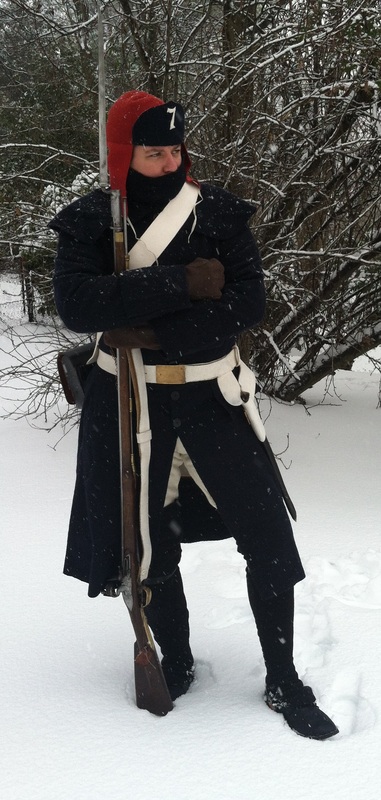Cold Weather Clothing
During the winter months, British soldiers were often equipped with specialized gear. Regiments received shipments of "donation cloth", which was a gift, most commonly from Queen Charlotte. Donation cloth varied year to year and sometimes by region. Donated wool was mostly commonly brown, blue, or white. Regimental tailors made winter issue gaitor trousers, leggings, mittens, and even blankets.
In addition to the donation cloth, soldiers were usually provided with a wool fatigue or forage cap. Some were decorated with an Arabic or Roman numeral designating the soldier's regiments. Just as commonly, the caps might go undecorated. This cap has the flaps folded down to protect the sentry's ears.
Each company also received a number of greatcoats for men are guard mount. The number varied through out the war; Between 20 to 60 were issued by the army to each regiment at the onset of cold weather. They were typically made of dark blue wool, but records show grey was used as well. They were long coats made to fit over the regimental coat. A small collar which could be folded up to protect the face, and cape extending just beyond the shoulder seam were typical features.
In addition to the donation cloth, soldiers were usually provided with a wool fatigue or forage cap. Some were decorated with an Arabic or Roman numeral designating the soldier's regiments. Just as commonly, the caps might go undecorated. This cap has the flaps folded down to protect the sentry's ears.
Each company also received a number of greatcoats for men are guard mount. The number varied through out the war; Between 20 to 60 were issued by the army to each regiment at the onset of cold weather. They were typically made of dark blue wool, but records show grey was used as well. They were long coats made to fit over the regimental coat. A small collar which could be folded up to protect the face, and cape extending just beyond the shoulder seam were typical features.


